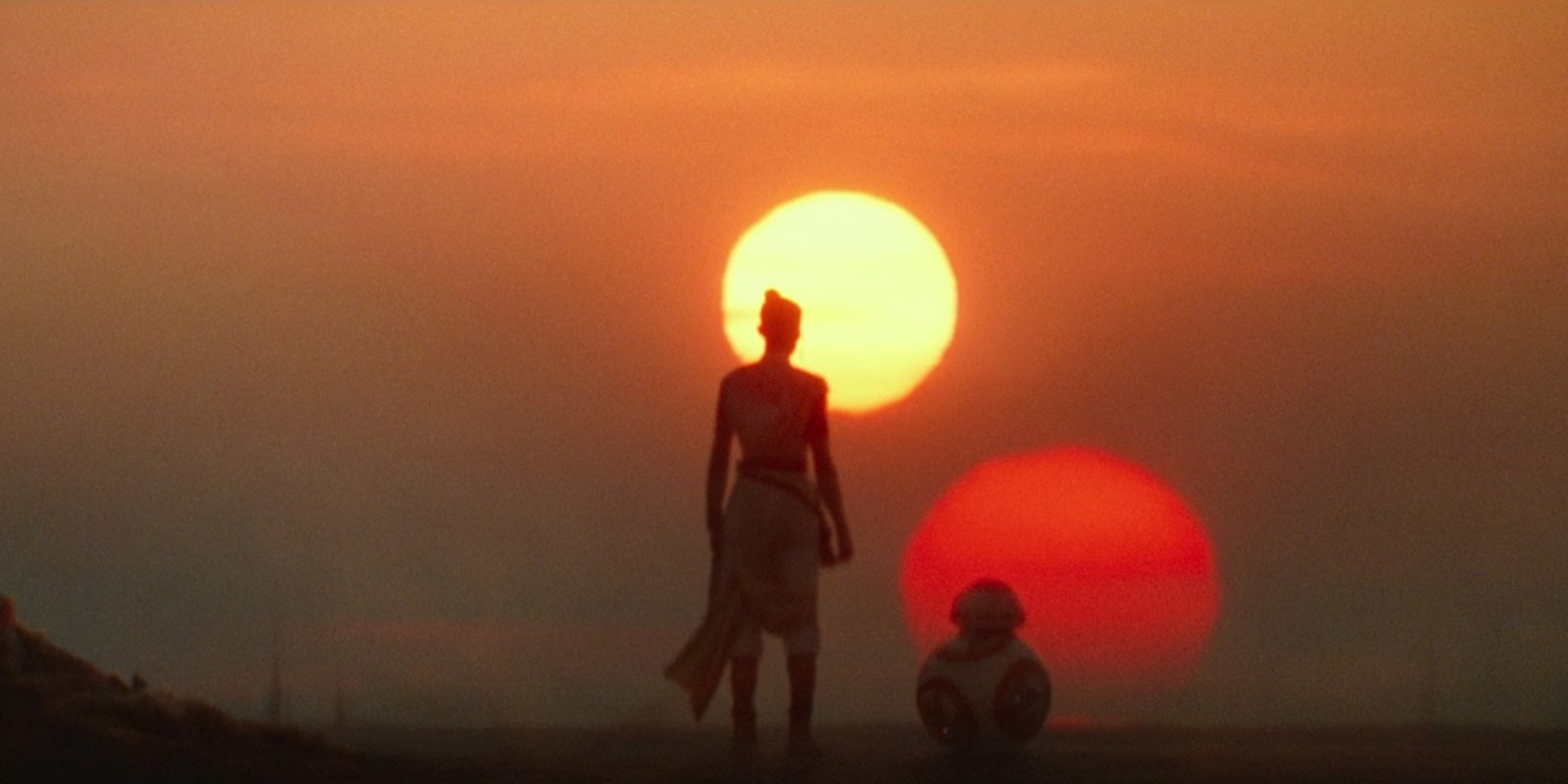The final shot of a movie—particularly those as scrutinized as the Star Wars films—can carry a lot of weight. It can convey a sense of hope, a celebration, or a sign of what’s to come. It can hint at the beginning of a larger story or its natural end; if the final shot echoes the first, it can carry a heft of weight.
The end of The Rise of Skywalker throws all that out, a thread by Jenny Nicholson, who goes in-depth on films like Star Wars on her YouTube channel, argues. While it might be a striking shot, it’s practically devoid of any real meaning.
The final scene of the film has long been contentious for a number of reasons. You can point to Rey’s trip to Tatooine, a planet that holds great significance to exactly two groups of people: Luke Skywalker, and Star Wars fans who to whom visiting Galaxy’s most famous planet hits a certain sense of nostalgia. She visits the Lars residence to bury Luke and Leia’s lightsabers. When a random woman asks for her name—a callback to an earlier scene in the film—Rey responds by calling herself “Rey Skywalker,” a name that induced groans, especially from people who weren’t fans of Rey’s bloated family history. Force ghosts of Luke and Leia look on and smile, something that some fans objected to because of the absence of Ben Solo among the Force ghosts as well as its nod to the end of Return of the Jedi. Then, with BB-8 by her side, she looks toward the horizon to watch Tatooine’s twin suns rise.
Tatooine’s twin suns have great significance in the Star Wars universe. As Nicholson noted, they’ve long been associated with Luke himself. It’s not just one of the most famous shots in the entire Skywalker Saga. It’s also one of Luke’s last: Right before he dies in The Last Jedi, he looks at a pair of suns setting on Ahch-To. There is a huge weight to those two specific shots. In many other instances when the imagery is used, whether it’s with Anakin Skywalker or Rey, the shot is usually devoid of meaning and instead harkens to a sense of “hey, we paid homage to the shot you all know and love again.”
As many critics have noted since The Rise of Skywalker’s release last year, despite the final scene of the film’s focus on Rey, it’s not really about her. It’s about Luke and the legacy he left behind rather than Rey’s place in the galaxy; not even the embrace of a new name or a quick shot at her new yellow lightsaber that she lights up for no apparent reason helps alleviate Luke’s shadow. Any moments from the final scene that tie to Rey take place before she introduces herself as Rey Skywalker.
Even back in the direct aftermath of The Rise of Skywalker, co-writer Chris Terrio explained just how Rey’s final moments paid homage to those who came before her.
“Rey goes back to Tatooine as a pilgrimage in honor of her two Skywalker masters,” Terrio said. “Leia’s childhood home, Alderaan, no longer exists, but Luke’s childhood home, Tatooine, does. Rey brings the sabers there to honor the Skywalker twins by laying them to rest—together, finally—where it all began.”
At this point, The Rise of Skywalker has been out for close to a year and streaming on Disney+ since May. We’ve hashed and rehashed. A flawed film, The Rise of Skywalker is by any metric. But in the sense of its place in the galaxy, it fits right alongside the rest in that we’ll always find interesting ways to highlight its highest and low points.


